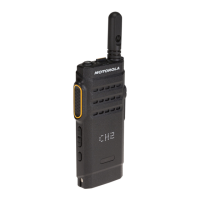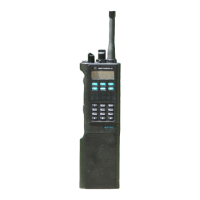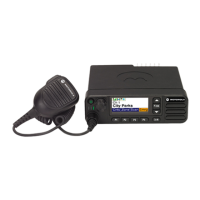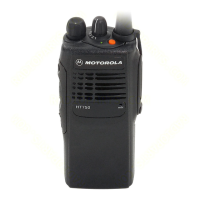Packet Data must be enabled on the network to send Location Reports using Packet Data. If the
Location Reports are sent over the Packet Data, a Packet Data icon is displayed when the message is
being sent.
If the Location Reports are sent via SDS with User-Defined Data Type-4 as a Transport Layer (SDS -
TL), either the European Telecommunications Standards Institute (ETSI) Location Information Protocol
(LIP) or Motorola Solutions Location Request/Response Protocol (LRRP) GPS Location Protocol is
used. The LRRP GPS protocol either use SDS - TL (for added reliability) or Simple GPS with no SDS -
TL (for saving air interface resources). GPS Protocol Identifiers are:
• LRRP SDS TL = 131
• LRRP Simple GPS = 3
• LIP GPS = 10
Location reports are sent in TMO. Your service provider can also provision location reports to be sent
in Direct Mode Operation (DMO). If the radio is provisioned to provide user indications, the feature
operational status is indicated on the radio display. Also, if configured by service provider, the radio
gives an audio-visual notification upon reception of LIP command.
The GNSS Location Service feature can be enabled or disabled as a whole using the Customer
Programming Software (CPS). It is possible to configure the feature parameters using the CPS, or over
the air. The CPS configuration provides a default profile. The commands received over the air may
overwrite the default profile configuration. The profile assigned to the radio determines when to send
location data, what data to send with what accuracy and to what address. All data requests and
configuration commands received over the air are checked to confirm that they have come from a
trusted source. Location reports are accepted only from authorized Individual Short Subscriber
Identities (ISSI) or IPs, depending on the configured transport layer of SDS or Packet Data.
NOTICE:
The Current GPS Cycle ends between 6th and 7th April 2019 at midnight Coordinated Universal
Time (UTC). After this date, your service provider must reconfigure the Current GPS Cycle
codeplug value to avoid malfunctions in GPS location reporting.
Ensure that the application receiving location messages uses valid addresses which are set up
on radio as an authorized ISSI range. Otherwise the radio rejects all system position requests.
You can enable or disable the GNSS Location Service through the radio interface. If this feature is
disabled, the Location Service Configuration can be programmed to the following parameters:
Receiver
GNSS Receiver is disabled. The radio responds to location requests by informing that location
reporting is disabled.
Receiver and Location Protocol
GNSS Receiver and Location Protocol are disabled. The radio does not respond to any location
requests.
Once the GNSS Location Service is re-enabled, the radio restores its location service.
The radio supports GNSS triggers functions, using LIP or LRRP, to report GNSS positions when the
radio meets a set of criteria. Your service provider can set up the following triggers, together with their
specific parameters:
Table 8: GNSS Triggers
Trigger Type
Trigger Event
Power-up Radio powers up in TMO.
Power-down Radio powers down in TMO.
Table continued…
MN002955A01-AA
Chapter 2: Services and Features
Send Feedback 53
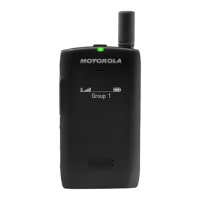
